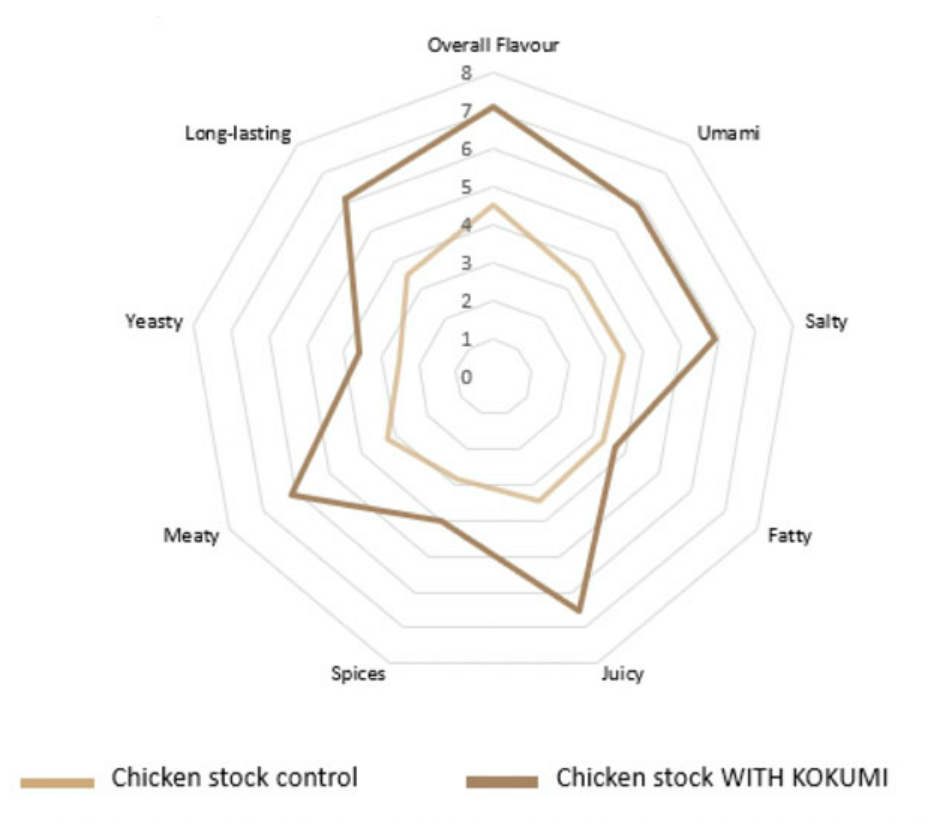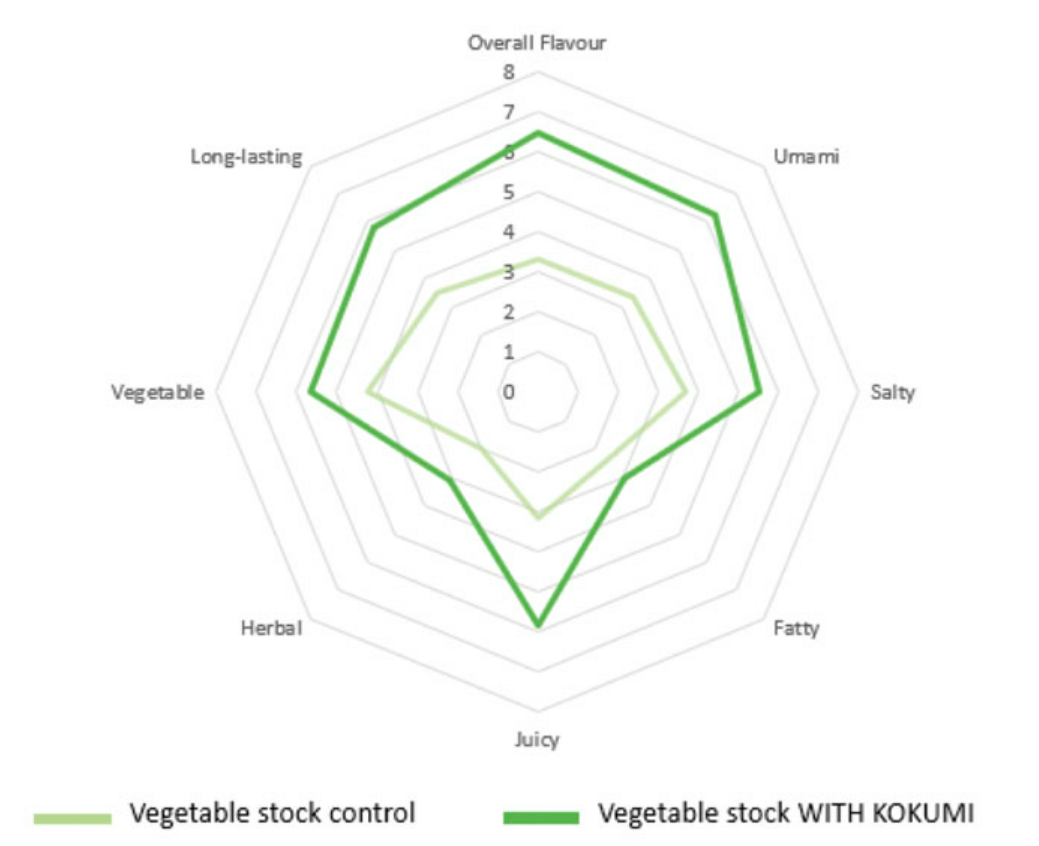We all know Umami, but have you also heard of Kokumi?
The year is 1907, and Japanese chemist Kikunae Ikeda is enjoying a traditional soup made with Dashi broth and seaweed. He stops for a moment and notices a taste that isn’t quite the salty, sweet, bitter, or sour sensations he’s familiar with. After taking a closer look at the seaweed, he allocates the distinctive taste to a naturally occurring amino acid, called L-glutamic – found in everything from tomatoes to mushrooms and the human body itself. After isolating the glutamic acid, Ikeda continues to taste it in combination with sodium and recognises the unique taste from his soup – and boom! Monosodium glutamate aka MSG was born.
Still about a century later, in 2000, Umami is accepted by scientist and chefs as the 5th taste sensation on our palates. However, since the 1980s, another flavour has been under close investigation and debated as a possible 6th sensation after sweet, sour, salty, bitter, and Umami.
How does it differ from the latter? What does it do to our foods and are there any health concerns connected with it? Does it have anything promising for the future of food development? And what does it have to do with onions?
Not a taste itself, but an amplifier
Kokumi is often described as mouthful “thickness” – mostly caused by fats. In an article from the Wall Street Journal, culinary scientist Joshua Evans is quoted saying: “It feels like a physical sensation, by coating the mouth and becoming more intense and expanding over time.”
The ‘taste’ can be found in both Eastern and Western cuisine, where it naturally occurs in aged and fermented foods. It explains why slow-roasted meats taste better than their quickly cooked counterparts, or why aged cheese is much more delicious than the freshly-made variety.
Kokumi remains a debated topic among scientist, as it can’t be detected on the palate on its own. It is rather activated in combination with other compounds found in food, triggers calcium receptors and intensifies the sensations of sweet, salty, and umami.
The following graphs from Nutraceutical Business Review, show two sensory maps and the result of adding Kokumi taste enhancer. The first map shows chicken stock and the second its vegetable counterpart. The profiling was performed by trained panellists in a group discussion.

The article continues by saying “The tripeptide gamma-glutamyl-valyl-glycine is one of the strongest kokumi compounds known and is found in fish sauce, yeast, soya sauce, shrimp paste, cheese, and beer. Kokumi works by enhancing the calcium receptors on the tongue to create a more intense, balanced and mouth-coating sensation.”
Kokumi has been the subject of scientific study since the 1980s in Japan, when seasoning company Ajinomoto Co. first managed to isolate the kokumi peptides and turn them into a tasteless powder, just as they did with MSG.
kokumi: bright future or doomed to fail?
Because of its powdered form and its ability to enhance flavours, it is feared that Kokumi may develop a bad reputation like MSG. In this article from delicious., senior food scientist Lauren Kliman is mentioned saying: “For food scientists, it is frustrating that ingredients including MSG and Kokumi are looked at negatively because they are generated in a lab.”
“It’s not like this is some new synthetic class of compounds that we’ll add to foods. They exist naturally in food already. So, it’s just a matter of isolating them and putting them in higher concentrations,” she said.
Dr. Joe Formanek, who is director of ingredient innovation at Ajinomoto Health & Nutrition North America, Inc., says that MSG is actually the opposite from being a nutritional villain. It is rather a possible “sodium-reduction tool” by delivering that exceptional Umami taste with one-third of the sodium of salt. This is surely interesting to develop healthier products that are safe to consume for people with high blood pressure.
As Kokumi works with other flavours and tastes to enhance the character already present in food, it poses exciting R&D prospects, whether for flavour enhancement, improved body or potential cost reductions from getting more “oomph” out of a streamlined formulation.
If Kokumi is set out for a triumphant path like MSG is yet to be seen. However, three companies (Kerry, Biospringer and Ajinomoto itself) have made a head start commercialising the flavour enhancer in forms of powders that add the desired taste effect without additional calories.
Umami vs. kokumi - an overview of the differences
So, with the information we know, we tried to summarise the major differences between the two Japanese discoveries in the following table:
| Umami | Kokumi | |
| Translates to |
Delicious taste |
Rich taste |
| Associated with |
Ripe |
Heartiness |
| Triggered by these components or chemical compounds |
Amino acids |
Calcium |
| Found in foods like |
Meat |
Milk |
| Taste receptor | Recognised as 5th taste sense | In debate |
and there you have it!
The scientific explanation why onions and garlic are such a centre piece in so many cuisines all around the world. Open up a cookbook and almost every dish starts by saying something in the lines of: “Step one: chop the onions and fry them in the pan with oil.” The compounds of the powerful allium plants amplify the flavour of fats and oils, and hence, the taste of many dishes.
So basically, our onions concentrates and powders are already Kokumi packed and ready to use in your formulation to uplift your product’s taste – in a way...
Yes, you’re welcome. 😊
References
https://www.fooddive.com/spons/tracing-the-sensory-story-from-umami-to-kokumi/603798/
https://www.wsj.com/articles/is-kokumi-the-next-taste-sensation-11618632271







